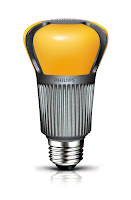In 2007 Congress passed the Energy Independence and Security Act. The legislation was created to foster energy independence and encourage production of more efficient technology. Unfortunately, the Act, in effect, also bans the incandescent lamp as we know it. The Act mandates efficiencies that currently have not yet been achievable with an incandescent source by any manufacturers. The efficiency standards will be phased in starting in 2012 with additional limits set in 2014 and 2020. The legislation promotes the use of less flexible technologies such as self-ballasted compact fluorescent lamps and LEDs. The self-ballasted screw-in CFL’s have a lower color rendering index than the incandescent lamps they are replacing, they are not fully dimmable, many cannot be used in universal operating positions and the optics are completely different - meaning lumen to lumen, they just don’t match up. LED’s are still in their infancy, and the industry has just started to develop standards and testing methods for solid state lighting. LED’s by nature are a point source and are not be the best fit for all general lighting applications. Not to mention the lack of standards for dimming and replacement. By 2012, the EISA standards will be mandatory. New amendments for further efficiency requirements have already been proposed for additional lamp types.

As the country moves toward creating a sound energy policy, more legislation of the lighting industry has occurred. The International Association of Lighting Designers (IALD) organized the Energy & Sustainability Committee as a method to participate in the process. “The E & S Committee’s purpose is to provide the expertise of IALD lighting designers to address lighting-related aspects of sustainable design and operations of the built environment. The work of the committee will be tested against the IALD’s definition of Sustainable Lighting Design: Sustainable lighting design meets the qualitative needs of the visual environment with the least impact on the natural environment.” Committee members serve on the review boards for ASHRAE, IECC and LEED and actively review new legislation in draft forms. In the past year, the committee has presented a position statement on the Federal Energy Bill - Standards for Energy Efficient Outdoor Lighting; and the IALD has signed a partnership to work with the US Department of Energy to “work cooperatively toward improving the efficient use of energy by lighting equipment and systems”.
As a lighting designer, I do believe, that a lighting system can only be sustainable if it truly satisfies not just energy requirements, but meets the qualitative needs of the occupants and creates harmony with the architecture. Examples of this persist and can be easily seen where office workers have removed the fluorescent tubes from the parabolics overhead. Studies and research in the field of lighting have taught us that better lighting improves worker efficiency and promotes a feeling of positive well-being. But if the toolkit keeps getting smaller, the challenge to meet our directives of thoughtful and sustainable lighting become more and more difficult.
As a member of the IALD Energy & Sustainability committee, I will be traveling to Washington, DC to meet with the offices of Senate and House members serving on the Energy and Commerce committees and additional subcommittees. I will be joined by fellow IALD E&S committee member and Lighting Designer, David Ghatan of CM Kling & Associates from Alexandria, VA and the IALD’s Policy Director John Martin. Our goal is to foster a dialogue between IALD Lighting Designers and our elected officials, to create a partnership with a sustainable future we can all benefit from. Stay tuned for updates from our initial meeting.
 Friday, July 29, 2011 at 10:50AM
Friday, July 29, 2011 at 10:50AM  Some recent additions have included:
Some recent additions have included: 


